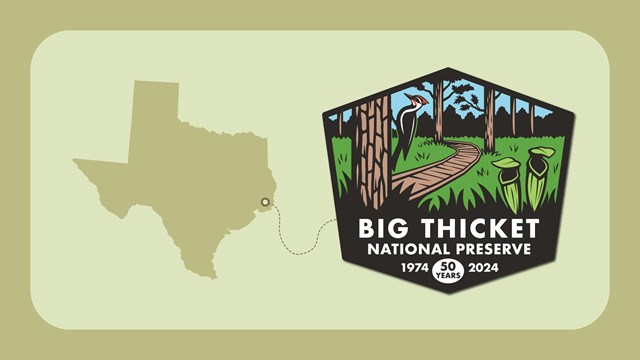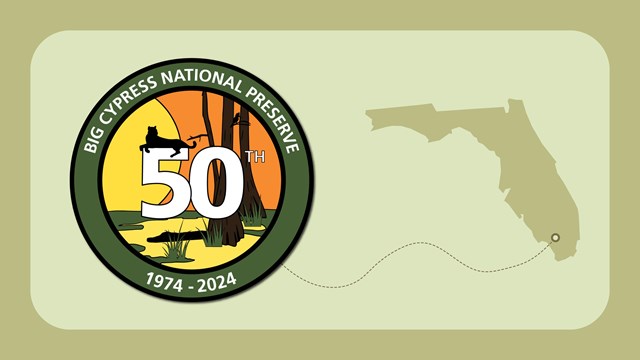Last updated: January 4, 2025
Article
Preserve Trivia: Big Cypress or Big Thicket?

NPS / Scott Sharaga
Two National Preserves.
One Big Anniversary.
In 2024, America’s first national preserves celebrated their 50th anniversary! Big Cypress National Preserve, Florida, and Big Thicket National Preserve, Texas, were established on October 11, 1974, by President Gerald Ford.
What’s a National Preserve?
A national preserve is one of many kinds of parks that make up the National Park System. Like other parks, a national preserve protects important natural and cultural resources. However, activities like hunting and mineral and fuel extraction may be allowed in a national preserve but not a national park. NPS staff monitor those activities to ensure that they do not affect the resources for which the preserve was established to protect.
Trivia Time!
Besides being big in size (and in name), both preserves protect vital wetland and forest habitats and offer different kinds of recreation.
Can you guess whether each photo shows Big Cypress or Big Thicket?

NPS Photo

NPS Photo
Big Cypress: The pinelands habitat owes its open, sunny appearance to periodic fire, which prevents the buildup of shrubs and grasses.

NPS Photo
Big Cypress: Don’t mind getting a little wet? Wade with a ranger to explore the wonders of a cypress dome.

NPS Photo / Cory Cravatta
Big Thicket: The nine-banded armadillo is the state small mammal of Texas.

NPS Photo
Big Thicket: Sloughs and other small pockets of water fill up during occasional flooding from nearby creeks, then remain full after the creek level drops.

NPS Photo
Big Cypress is home to a small population (between 20-30) of Florida panthers, the state animal of Florida and a subspecies of mountain lion.

NPS Photo / Gustave Pellerin
Big Cypress: The Kirby Storter Boardwalk leads hikers into a scenic cypress strand.

NPS Photo
Big Thicket: Join a ranger-led trip on the Cooks Lake to Scatterman Paddling Trail to experience the wonders of the bayou.

NPS Photo
Big Thicket protects longleaf pine forests with prescribed fires that burn excess brush and promote seedling growth.

NPS Photo
Big Cypress: Bromeliads like the giant and cardinal airplants pictured above don’t require soil—they get all of their nutrients from rain and moisture in the air.
How did you do?
Despite being over 800 miles apart, Big Cypress and Big Thicket feature remarkably similar habitats and scenery. Plan your visit to these national preserves and celebrate their 50th anniversary!

Visit Big Thicket in Texas!

Visit Big Cypress in Florida!
